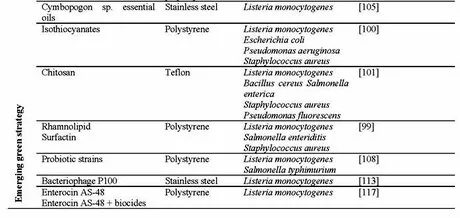As a consequence of the results achieved within Quafety EU Project on quality and safety of fresh-cut produce, the scientists of Foggia University (Italy) have published a chapter on microbiological safety of fresh-cut produce and the factors affecting L. monocytogenes survival and growth on fresh-cut produce.
L. monocytogenes is a bacterial pathogen responsible for several food-borne illnesses and it is often found on fresh produce when consumed raw, in the chapter the following issues have been discussed:
- Optimum growth conditions for L. monocytogenes;
- Structure and physiology of L. monocytogenes biofilms;
- Potential critical steps, during minimal processing, responsible of cross-contamination with L. monocytogenes.
It is a Gram-positive, non-spore forming, facultative anaerobic bacterium, and it grows at pH range from 4.3 to 9.8, tolerates low water activity (aw 0.91), survives at low temperatures (around 4°C), moreover it is motile thanks to peritrichous flagella.
L. monocytogenes is able to form a biofilm that protects the bacterial cell from sanitizing agents and allows the pathogen to grown on rubber, plastic, glass and stainless steel surfaces.
In these years, different chemical agents with a broad antimicrobial spectrum (e.g. chlorine, ozone, anionic acids, quaternary ammonium chloride, etc.), physical methods (e.g. UVA radiation), and biological treatments (e.g. essential oils as anti-biofilms agents, bacteriophage preparations or bacteriocin-producing strains) have been studied to control the initial pathogen adhesion and biofilm formation on abiotic surfaces (Table 3).
Table 3 - Some chemical and physical-based approaches and emerging green 'strategies' proposed to prevent and remove L. monocytogenes biofilms and other pathogenic microorganisms from different contact surfaces.
 |
The scientists conclude that the best strategy against L. monocytogens is the contamination prevention, which can be managed by respecting the good agricultural, hygienic and processing practices. Considering the pathogen characteristics, the current approach to prevent and remove its growth is to develop a new generation of biofilm-resistant surfaces.
Source: Botticella G., Russo P., Capozzi V., Amodio M.L., Massa S., Spano G., Beneduce L., ‘Listeria monocytogenes, biofilm formation and fresh-cut produce’, 2013, pagg. 114-123, Chapter in Book:, Microbial Pathogens and strategies for combating them: science, technology and education, Editor: A. Méndez-Vilas, Publisher: ©FORMATEX.
